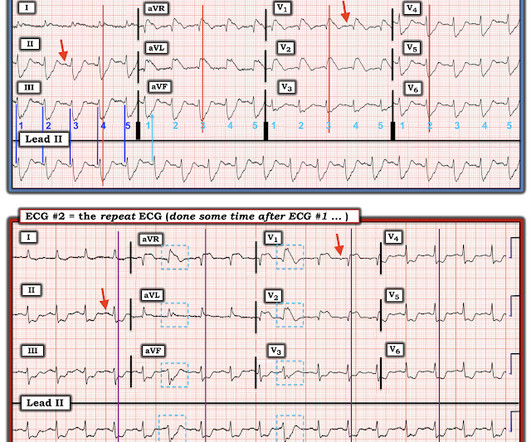ECG Pointers: Slow and Steady Wins the … Pacemaker?
EMDocs
APRIL 3, 2025
Authors: Lloyd Tannenbaum, MD (EM Attending Physician, APD, Geisinger Wyoming Valley, PA); Christian Daniello, MD (Staff Physician, Geisinger Wyoming Valley) // Reviewer: Brit Long, MD (@long_brit) Hello and welcome back to ECG Pointers, a series designed to make you more confident in your ECG interpretations. Please check it out.



















































Let's personalize your content